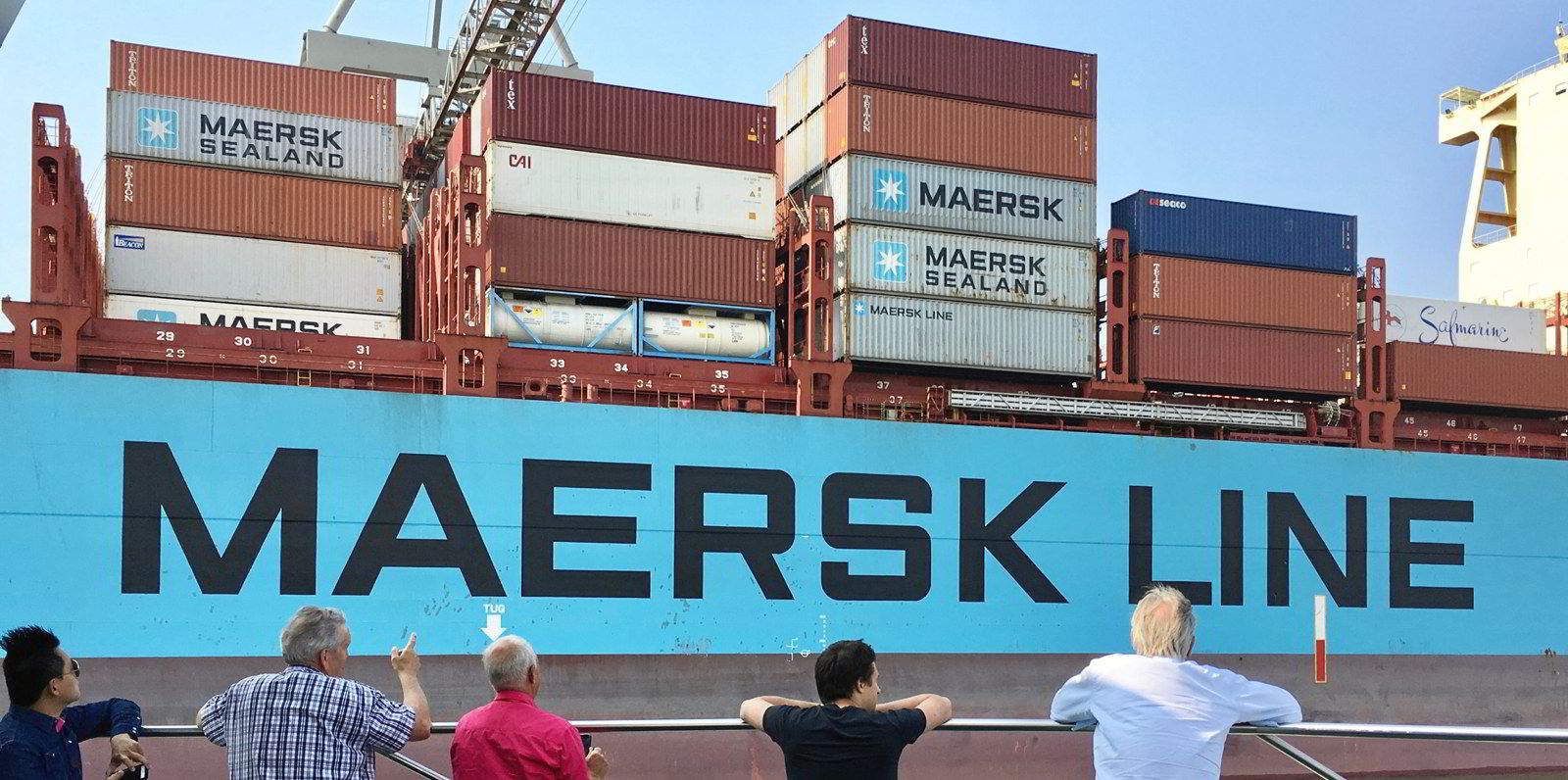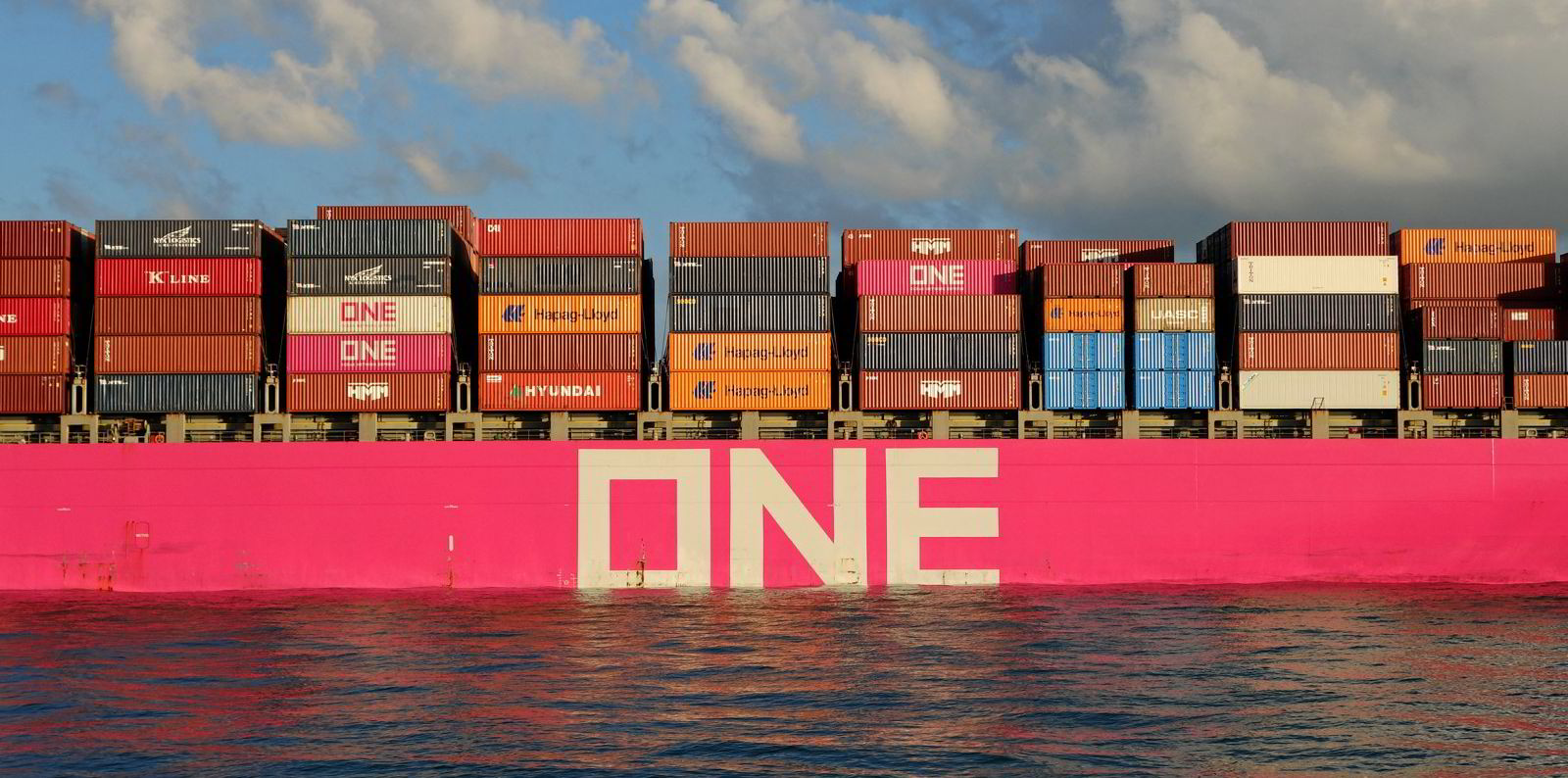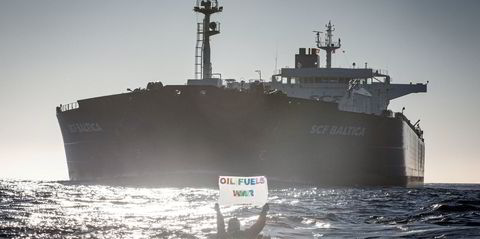A convergence of spot and long-term freight rates has raised the prospect of container contracts being renegotiated.
But that does not worry AP Moller-Maersk chief executive Soren Skou, despite the freight industry’s notorious reputation for failing to honour shipping contracts.
“We are confident about contract compliance, despite spot and contract rates converging,” he told an earnings call on Wednesday.
Skou confirmed that the company has completed most of its contracts for the current year at improved rates.
That contrasts with the sinking spot market, where rates continue to decline during what is traditionally the middle of the peak season.
The Freightos Baltic Index’s Global Container Freight Index was down to 6,150 on 3 August, from a high last September of 11,109.
That compares sharply with the soaring value of Maersk’s contract portfolio.
The carrier expects contract rates to be $1,900 per 40-foot equivalent unit (feu) higher this year than in 2021, around $500 more than expected at the end of March.
The company has conducted “relatively smooth and normal discussions” over contracts, Skou said, and he remains confident that the range of one-year and multi-year contracts it has signed will be fulfilled.
Structural changes
That confidence stems partly from changes in the way freight contracts are agreed.
Customers were “not playing” the freight market as much as they had in the past, Skou said.
“Our portfolio is heavily weighted towards BCOs [beneficial cargo owners] and they have traditionally been quite compliant on contracts,” he added.

“And the risk has been more basically on the volumes, not on the price.”
There have also been dramatic changes to the structure of deals agreed with freight forwarders.
“It is take-or-pay, the language is very, very clear. That’s why we believe we have high contract compliance,” he said.
“It’s a very different scenario from when almost half of our business was with freight forwarders, which is not where we are today.”
Skou said that 71%, or a little more than 7m feu, of 2022 long-haul volumes are now covered in long-term contracts.
Just over 28% from these volumes are on multiyear contracts that reprice based on rolling indices or in fixed price contracts and provide greater stability of earnings.
Challenging relationship
Several observers remain wary of the strength of container shipping contracts.
Lars Jensen, chief executive of Vespucci Maritime, said contracts that are seen to be above spot rates “will generate challenges in the relationship between shippers and carriers”.
“Historically, many bilateral contracts between shippers and carriers have been de facto unenforceable when spot and contract rates were too far out of alignment,” he added.
Jensen noted that when spot rates exceeded contract rates earlier in the pandemic, shippers were unable to move expected volumes at the agreed contract rates.
That scenario may unfold in the opposite direction if spot rates fall below contact rates, he said.
A survey in July of the customer base of freight data portal Xeneta found that shippers are looking to renegotiate contracted rates, given the recent spot market drops.
Some 44% no longer felt confident in the stability of long-term contracts.
Of that 44%, about 22% said they are more likely to allocate lower volumes only to cheaper contracts.
A further 22% preferred to move allocation to the spot market as soon as prices dip below long-term rates.
Easing the pressure
The pressure on contracts could ease with the pace of falls in spot markets starting to slow.
Rates from Asia-US West Coast fell by about $6,000 per feu and more than 50% from the end of April through June, according to Freightos portal.
Since then, the decline has been 14%, or around $1,000, taking rates to $6,692 per feu on 3 August.
Some ocean carriers also expect strong transpacific volumes for the coming months.
Congestion and blanked sailings from Asia to Europe have kept freight rates steady since early May despite decreasing volumes.
Those dynamics are expected to keep rates well above normal, through the typical peak season and probably well beyond, according to Judah Levine, head analyst at Freightos.
Spot rates from Asia to North Europe jumped sharply to $10,415 per feu this week, although those from Asia to the Mediterranean dropped by more than $1,000 to $10,583 per feu.






